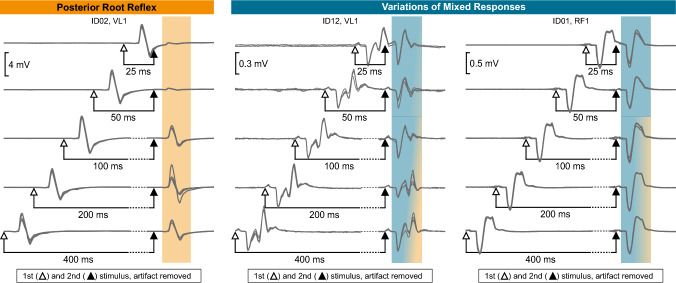Fig. 1.
Short-latency response types. Examples of posterior root reflex responses (left) and variations of mixed responses ranging from about equal motor and reflex components (center) to predominant motor component (right) in different participants (ID02, ID12, ID01) and muscles (VL1, RF1). Four responses are superimposed at each interstimulus interval (25–400 ms). The open and closed arrows indicate the timing of delivery of the first and second stimulation pulse (stimulation artifact removed for better visualization). Shaded areas highlight the second response, and the presence of reflex and motor components is shown in grades of orange and blue, respectively. VL1 vastus lateralis, RF1 rectus femoris

